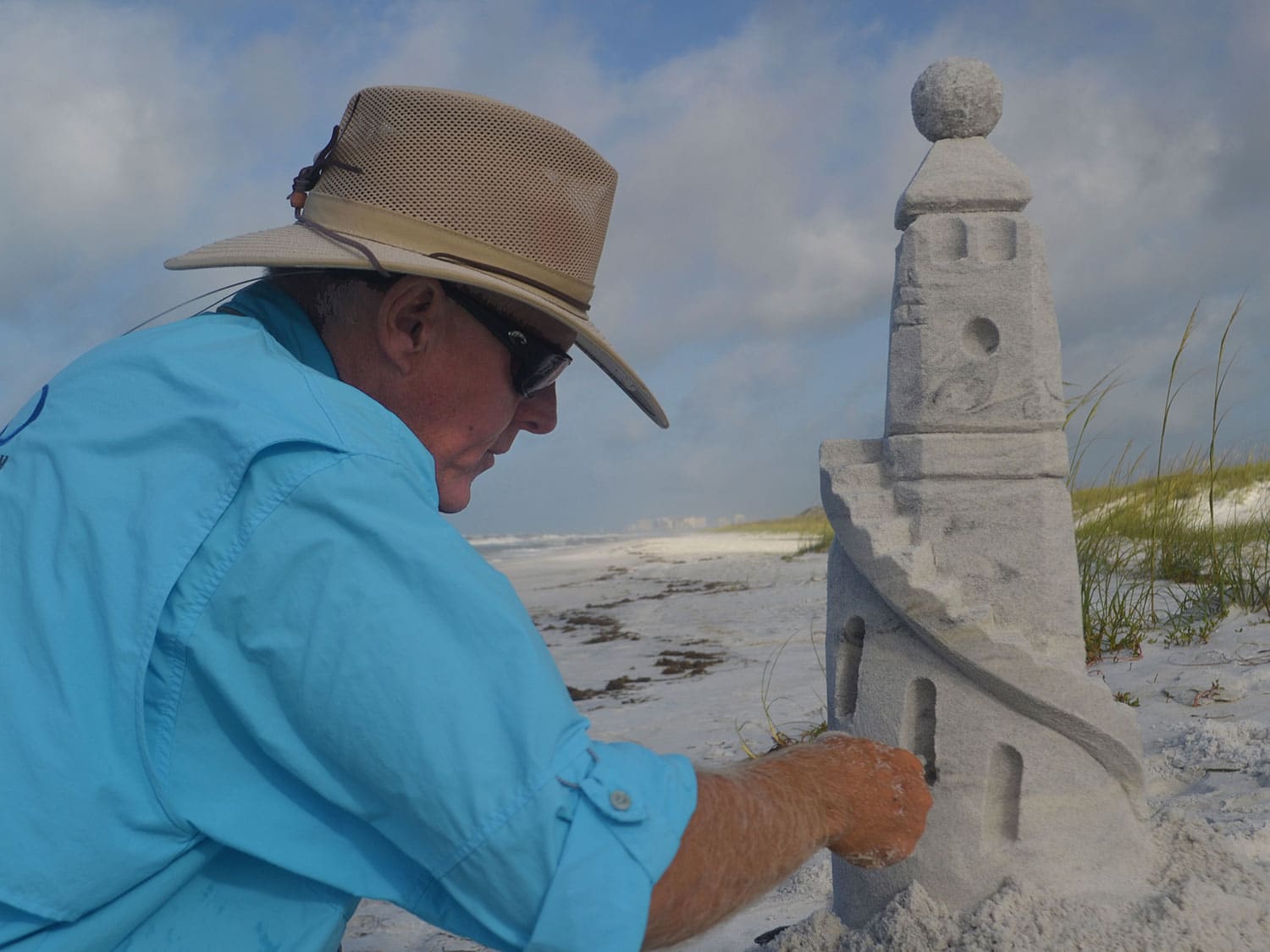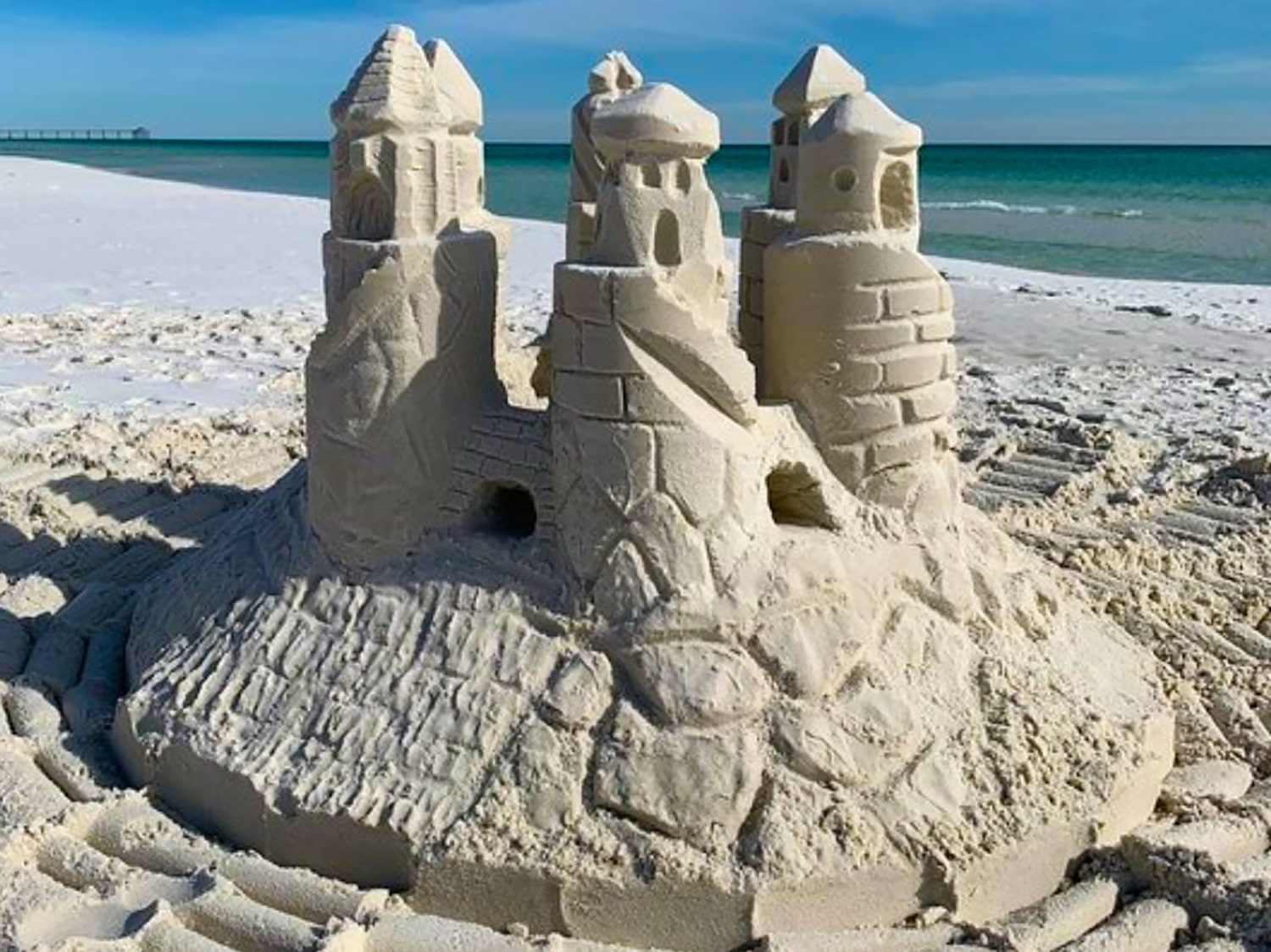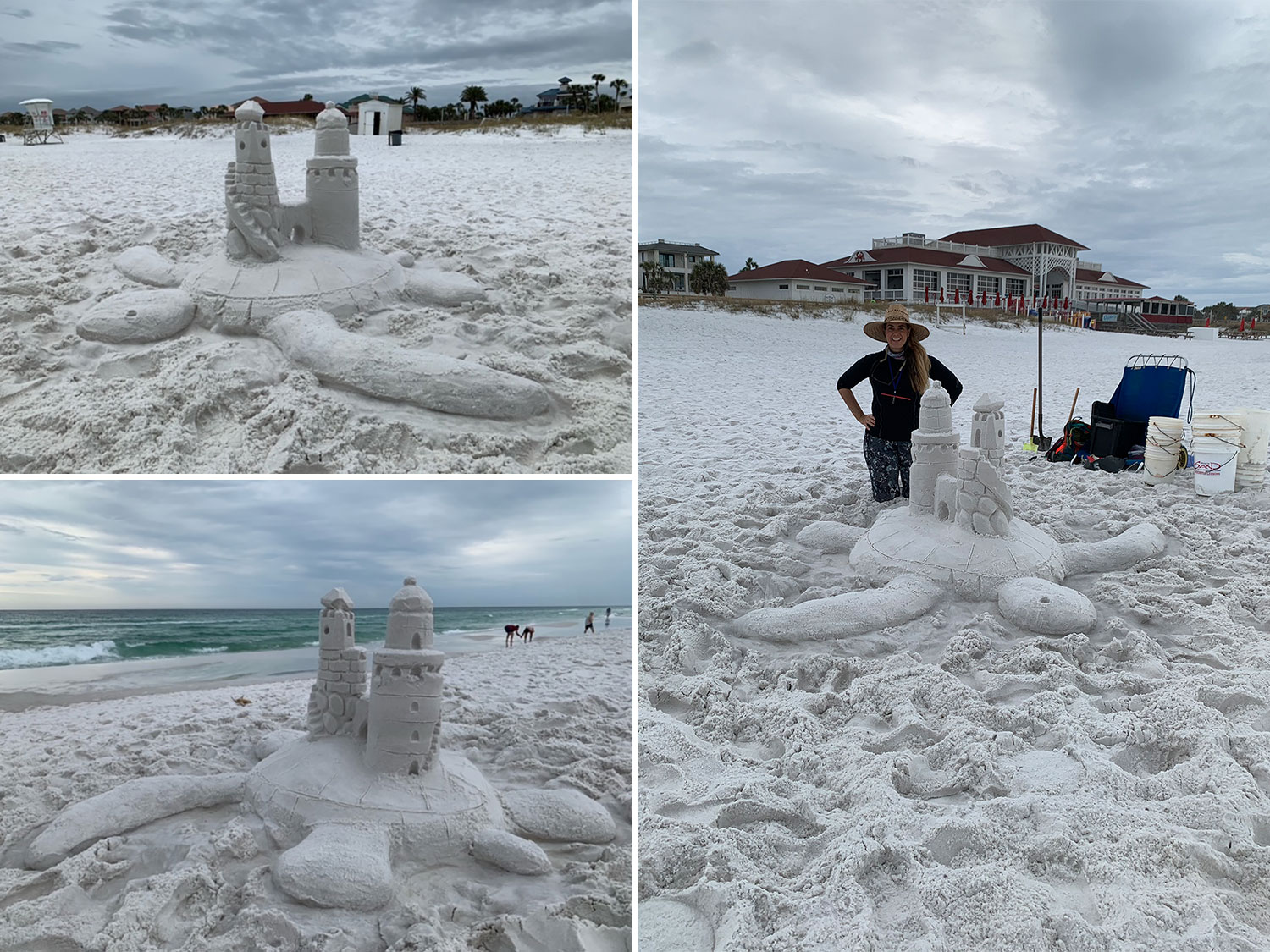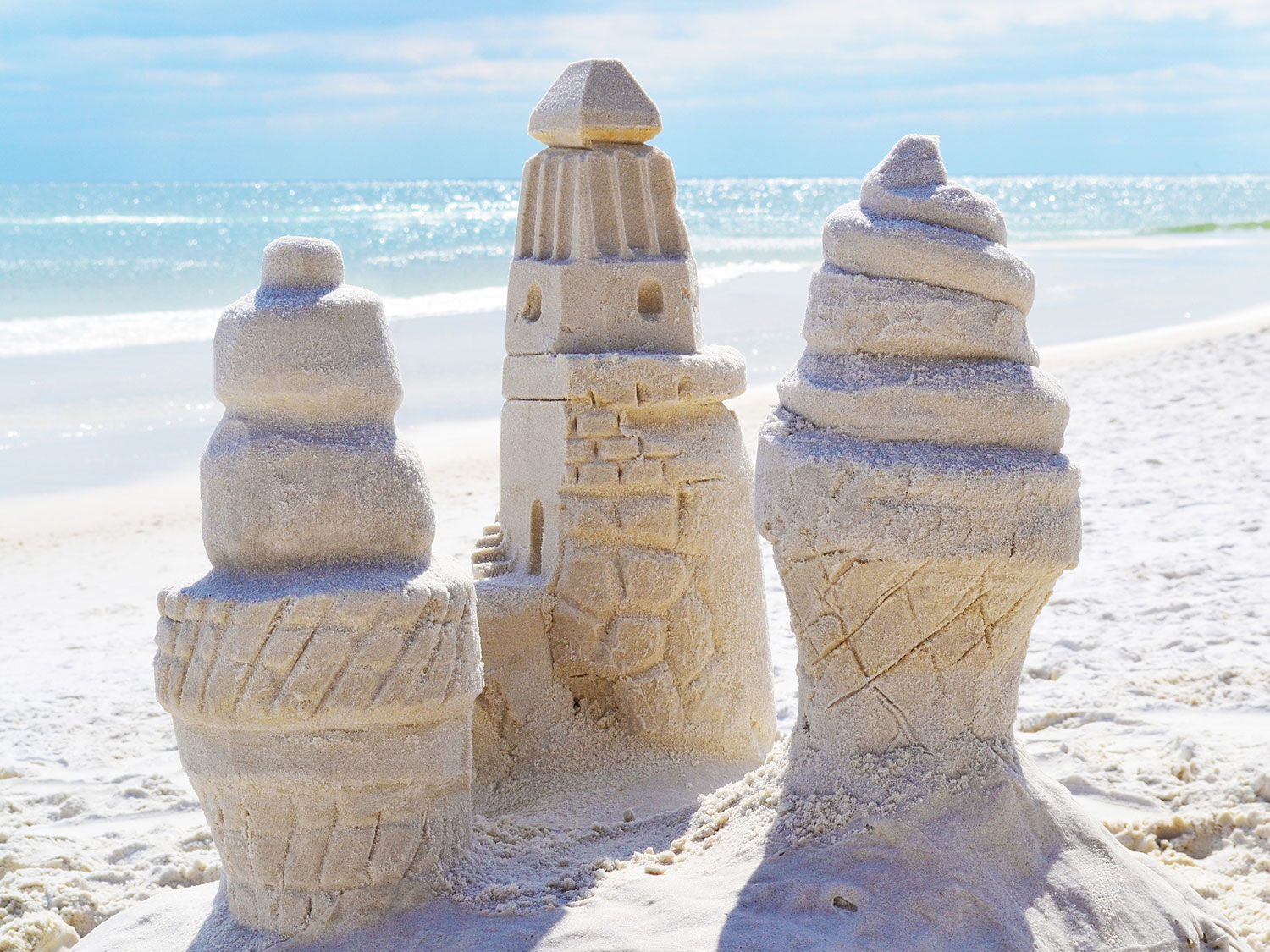It's Never Too Late To Learn How To Build A Sandcastle
This Destin-based outfitter shares secrets in the magical art of beach architecture.
Before my recent arrival in Destin, Florida, I had never heard of sandcastle lessons. The second I learned a person could book such a thing, I made the call. On the other end was Capri Mungeam, who co-owns Beach Sand Sculptures along with her husband, Rick, the 2011 winner of the Pro-Am Division of The World Championship of Sand Sculpting.
When I confess to Mungeam that I was new to this concept, she doesn't skip a beat. "Most people have no idea," she says. "That's because only a few places in the world offer lessons."
In case you're wondering, the other two are San Padre Island, Texas, and Siesta Key, further south in Florida. "But, for the record," she quickly adds, "we are the world's largest operator giving lessons."
They're so big, in fact, that a few years back, they had a contract with Princess Cruises, showing their staff how to teach the art of sand towers.
I know I am in good hands when, the next day at 10 a.m., I head to the sands in front of The Crab Trap restaurant to meet Katrina Martinez, one of the instructors who stayed on for the winter season.
She's wheeling a big cart of white buckets, and I start to wonder what I've signed on for.

Sandcastles had been the stuff of summer youth—dribble piles, freeform and messy. The art was in getting dirty and seeing how big your creation could tower. But the whole lot was organic chaos. Never with a plan.
I watch as Martinez unpacks: eight 5-gallon buckets—two with no bottoms—and six one-gallon pails. Plus, paintbrushes, melon-ballers, shovels, scoops, spatulas and a host of other tools.
She proceeds to school me on the ratios of water to sand, and how to tap-tap-tap the sides of the bottomless buckets, which serve as forms for shaping the towers. She teaches me to watch for the instant the sand has set, from watery mess to hard-as-cement blocks. The color changes lighter as it dries, quickly. Still, I doubt its solidity.
That is, until it's time to lift the form—the bottomless bucket—from the just-set tower.
Martinez gives herself a countdown, and on one she pulls hard, and falls, butt first, onto the beach.
I laugh. Until it's time for me to lift my bucket from my tower. I deadlift 160 pounds and I can't get the bucket to budge. It's beyond embarrassing.
Luckily, this is what instructors are for. Martinez makes light work of it, and then teaches me to build doors, windows, bricks, spirals staircases and the lot.

I practice, trying to be delicate, but I can't help but ask, "What would happen if I press too hard and knock this whole thing over?"
Martinez smiles. "We have a saying for that: Make a turtle out of it."
When you transition a toppled tower into a turtle, sad faces evaporate. Crumbled messes of sand can be salvaged quickly into new art. Make a turtle out of it!
Because I love turtles, I tell Martinez I have to see this.
Our two towers—hers with the nicely stacking angles of a spiral staircase and the clean lines of well drawn brick, and mine drawn and shaped into a more-organic-looking lighthouse—sit atop a hamburger-like base. It's this base that becomes the turtle.
Martinez sits, using her finger to draw the outline of two longer front flippers, two shorter ones in back, and a tail into the beach around our hamburger of towers.
Together, we two-fist it, scooping mounds of wet dirt into the outline of the turtle's limbs. Sculpting within the lines. I follow her lead and she shapes and smoothes. A turtle emerges.
I do the honors of etching in lines on the head, the shell. With the melon-baller, I scoop out two eyes that gaze toward the horizon.
Before we can really stand back and survey our work, the first of the crowd of lookie-loos walks up, smart phone leading the way, and asks to take a photo. She takes several, and I wonder if she'd prefer me out of the frame, so she can tell Facebook this art was crafted by her hands.
When she tires, I get my chance to document the greatness. I snap the work from every angle, but then the biggest question looms. How does this end?

I ask Martinez what the average lifespan is of a sand sculpture.
"Kids come barreling toward them," she says. "They can't help themselves."
In peak summer season, most don't last an hour, untended.
I get it—the need to destroy. To be the chaos.
And, yet, we just invested the last two hours in building this all. I hate the thought of it coming crashing down. If these non-leaning towers are going to crumble, I want to be the one to come in like a wrecking ball.
But I can't bring myself to do it.
And just then, I feel a drop. Tufts of sullen gray have marched toward the shoreline, and the sky starts spitting. I watch the slow erosion. I could tell you I had a moment of appreciating the fleeting nature of life, but really, I was just satisfied that the honors of destruction fell not to any terrorizing 8-year-old, but to the biggest wild leveler of all, Mother Nature.
